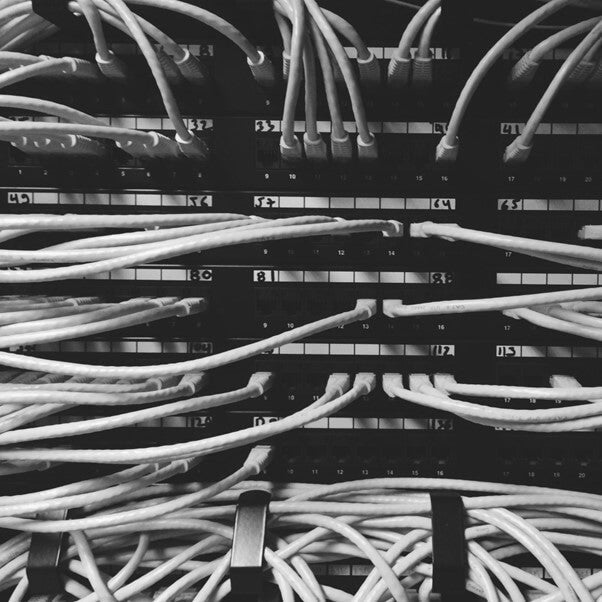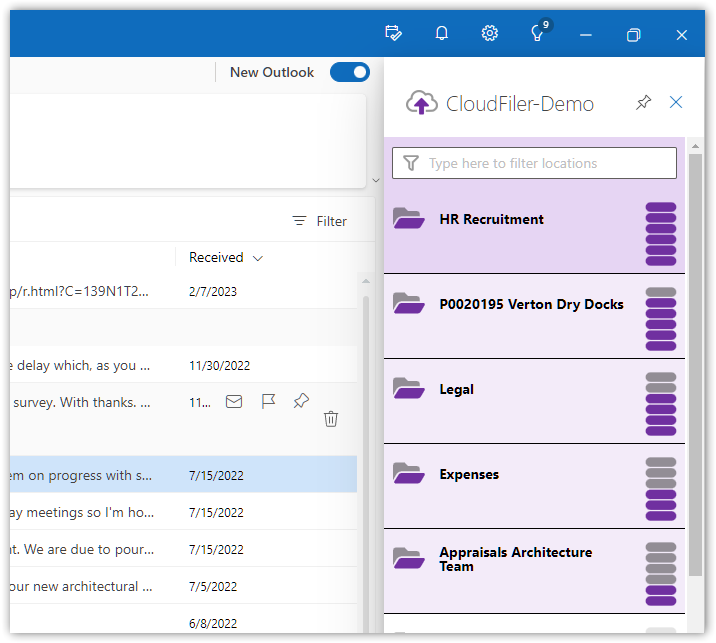How does it work?
CloudFiler can do some seemingly impossible things, so this page is here to provide some details on how it works and how you will manage it for your staff

How it works
CloudFiler is a 'web App' which is enabled by uploading a manifest file to your Exchange-online service. This is what enables it to run on all devices.
When a user files an email, the Add-in tags a hidden destination ID to the email. CloudFiler is linked to your Exchange on-line and requests the email. Your server encrypts it and then sends it over an encrypted connection to our servers on the Amazon cloud.
The system is banking level PCI compliant, encrypting emails in transit using TLS 1.3 protocol and at rest using AES-256.
Our systems make 3 copies onto 3 separate servers and we retain a 4th copy on a non-Amazon service for additional security. All these copies are encrypted with your key, so we can't read your email.
To maintain security, connections to the service use task-specific one-time and time limited security tokens.
Our 'Pico' search engine then provides super-fast access to the emails from any device.
If you license the Professional or Enterprise tier, your emails will be synced to your own storage automatically.

Where can you sync to?
With CloudFiler's Standard licensing tier you can only file to the cloud.
The Professional and Enterprise tiers also file to the cloud so that you have the full capabilities of CloudFiler from any device, but they can additionally sync copies of the emails into: Windows folders, cloud storage like Egnyte, SharePoint, OneDrive, etc.
Each filing location is typically linked to a single sync location but you can have more, so users can just select the project or customer location and the email is synced to multiple places.
NOTE: CloudFiler never deletes emails from a user's inbox but can optionally move them to the 'Deleted items' or 'Filed' folders

What is the underlying architecture?
CloudFiler enjoys the advantages of cloud based systems thus avoiding the problems with desktop software.
It delivers filing and indexing services in the cloud that connect directly to your Microsoft Exchange on-line service.
- Single search index in the cloud - no local duplication or network thrashing
- Web Add-in - never blocked by Outlook
- Supports all devices
- Nothing to install (there are optional Apps)
- No software versioning to deal with
- No compatibility issues
- Central and automatic license management
- Central management of settings

How does it know where to file emails?
A filing location consists of two parts:
- Location name, which is what users see
- Path, which is where the files will be placed
There are multiple ways to create locations and you can control which staff can do it.
CloudFiler learns where users file emails, so as they read or compose new emails it is anticipates where they will file them and will offer a sorted list of locations from which they can choose.
This makes filing easy and accurate.
With emails filed logically, finding them becomes fast and easy.

How reliable is it?
No software is bug-free and this is particularly true of locally installed software which is exposed to differences in: hardware, operating system, application version, changes to libraries like .Net, individual configuration, other applications on the same device and just plain user error.
Cloud based systems have far fewer issues and you might be surprised to learn that you can use CloudFiler without installing any software on any of your client devices or indeed any of your servers; this is all part of Microsoft’s new way to deliver Add-in tools.
So most of CloudFiler lives on Amazon Web Services (AWS) which is highly fault tolerant; if a server dies another is spun up automatically without anyone noticing, if more horse-power is needed, additional servers are automatically deployed and of course, users can’t mess it up.

Does it work with new Outlook?
CloudFiler works with Outlook 2013 through to Microsoft 365 and the 'New Outlook' which is a 'Windows Progressive App' based on 'Outlook Web Access (OWA)'.

Can it integrate with our systems?
CloudFiler offers a rich API with support for multiple languages including: C#, VB, HTML, Python, PHP, Swift, Dart, Go, etc.,
A common requirement is to automatically create new locations when new clients or projects are adding in your CRM or financial systems.

What about our legacy data?
The process of moving to CloudFiler is typically fast and painless.
As part of that process our tools will index your old emails and thus enable you to search into their attachments without the need to re-file them.

Is there really nothing to install?
Strictly speaking, you can use CloudFiler without installing any software on either your client devices or your servers, but most customers choose to install one or more of our optional Apps, which make certain processes more fluid and pleasant to use. These are all provided as MSI's to ease deployment.

Centralised control
CloudFiler is designed to make things easy for IT staff.
Managing application distribution is straightforward through the Microsoft 365 Admin Center.
There's no need to manually add or remove users, as CloudFiler automatically verifies if they belong to your domain.
CloudFiler provides a dedicated portal through which you can configure defaults and secure user preferences. The portal also allows you to manage confidential locations and assign access permissions.
To further ease the workload, you can delegate management rights to others.
Need to know more?
Take a look at the full list of capabilities